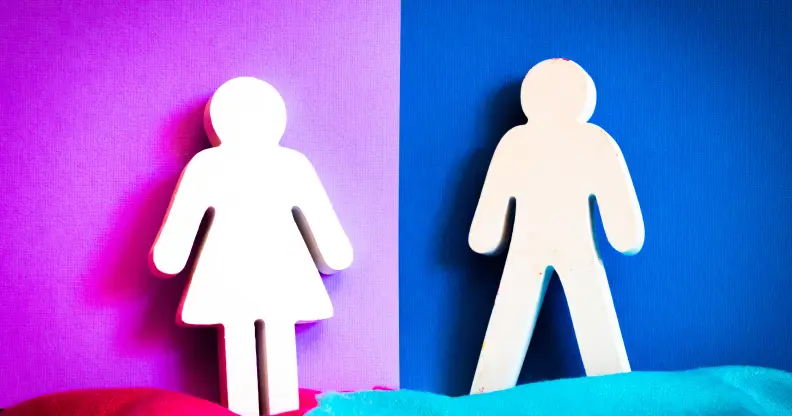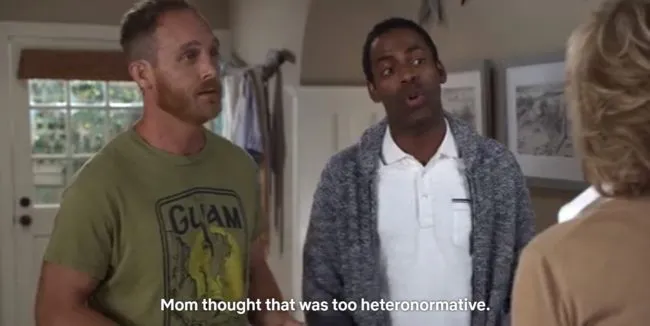Heteronormativity: definition, societal examples and why it’s harmful to LGBT+ community

Heteronormativity. (Pexels)
Heteronormativity is the belief that heterosexuality is the ‘acceptable’ sexual orientation of society.
It follows the perpetuation of social norms, defining which gender role identities and sexualities are considered ‘standard’.
According to Merriam-Webster, the definition of heteronormative is the “attitude that heterosexuality is the only normal and natural expression of sexuality.”
It also follows the viewpoint that cisgender people (meaning those whose gender identity corresponds with their birth sex) in opposite-sex relationships are the standard kind. It’s said that this thought process is often coded into minds through various heteronormative societal influences.

TV series Grace and Frankie often mentions heteronormative issues. (Netflix)
This is why people often believe that LGBT people are simply confused or going through “a phase.” This view is especially taken if the LGBT+ person’s appearance doesn’t match the stereotype. A prime example of this is with femme or ‘lipstick’ lesbians.
It can be harmful to the LGBT+ community as it makes one feel like they don’t belong in what society deems to be acceptable.
Heteronormativity examples and influences in society
Heteronormative societal assumptions and influences can be seen everywhere from traditional views on marriages, religion, cinema and Western media, including the news, commercials and advertisements. This could be why we live in such a heteronormative society.
For example, here is a classic heteronormative scenario: The wife stays home with the kids while the husband goes off to work.
Not only is this the standard plot in most movies and sitcoms, until recent times, it was also the standard way of looking at marriage and gender roles.
“Romantic comedies are pretty heterosexual and heteronormative.”
—Vogue
Indeed, heteronormativity follows the assumption that both intimate and marital relations are best fitted between opposite members of sex. It is for this reason that some LGBT+ people in same-sex relationships are turned off by the idea of marriage.
Vogue recently reported that: “Romantic comedies are pretty heterosexual and heteronormative.”
This is prime example of how heteronormativity is influenced. Romantic comedies are one of the most popular genres yet there are very few which follow a non-heteronormative route.
Often, these kinds of movies will show a cis man, a successful provider, and a cis woman, a beautiful damsel in distress, fall in love. Thankfully though, there are some brilliant LGBT movies and lesbian rom coms that portray a different way of storytelling.
In one episode of Ask the Aunties, where our readers can ask us for advice, one lesbian reader had a dilemma that she found marriage too heteronormative but her girlfriend was hinting that she wanted to get married.
Watch the video below:
But not only does heteronormativity assume that a ‘normal’ marriage is between a man and a woman, it also holds the belief that individuals should fall into certain categories in life due to their genitalia.
Heteronormativity is also taught in schools as most Western curriculums teach children about heteronormative life. Education reforms are changing this in many countries around the world though.
While we still live in a heteronormative society, times are changing with law reforms and LGBT+ representation increasing each day in schools, movies and media.
Soon, we may change the perceptions and norms that continue to be harmful to the LGBT+ community.

